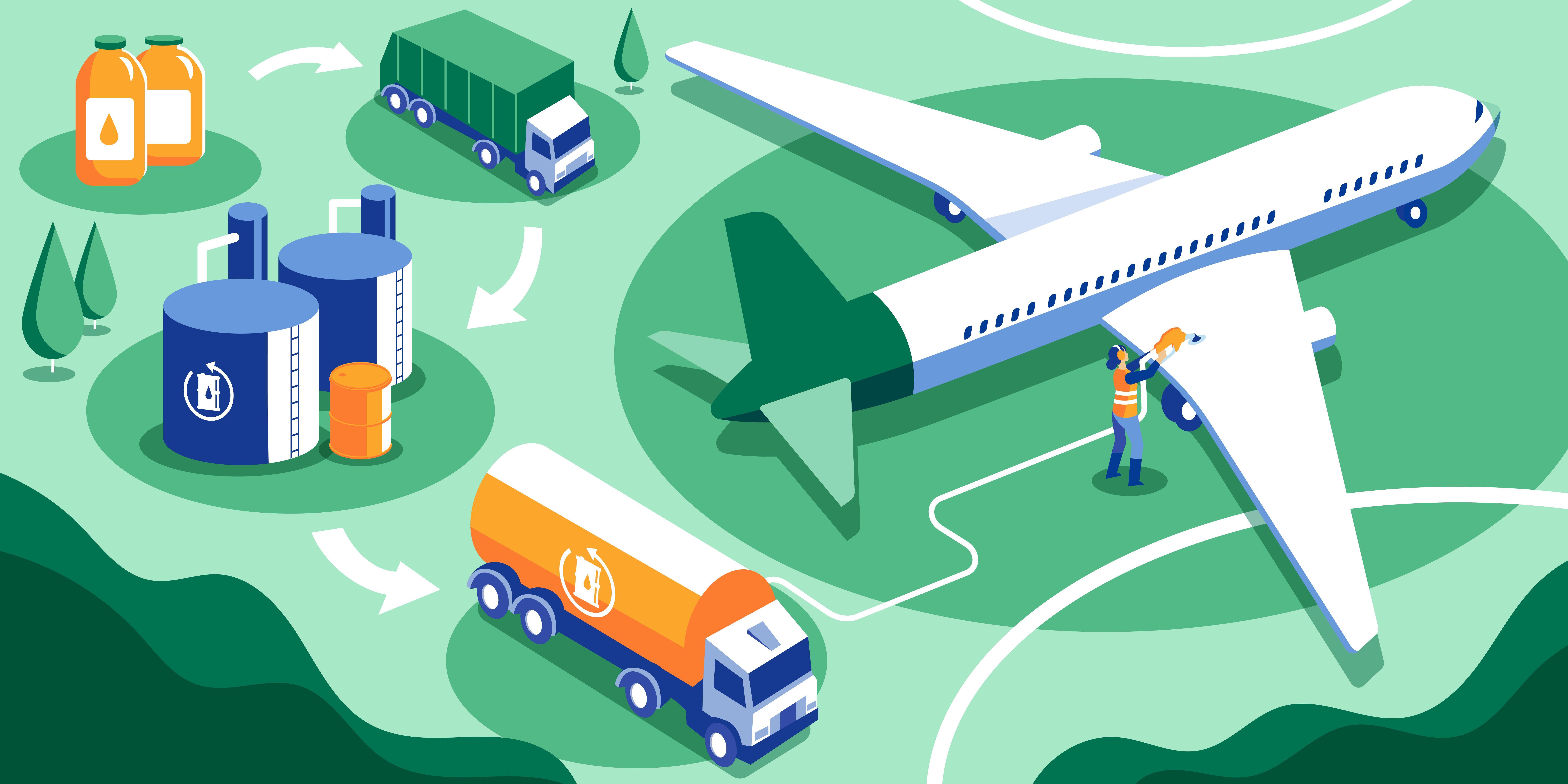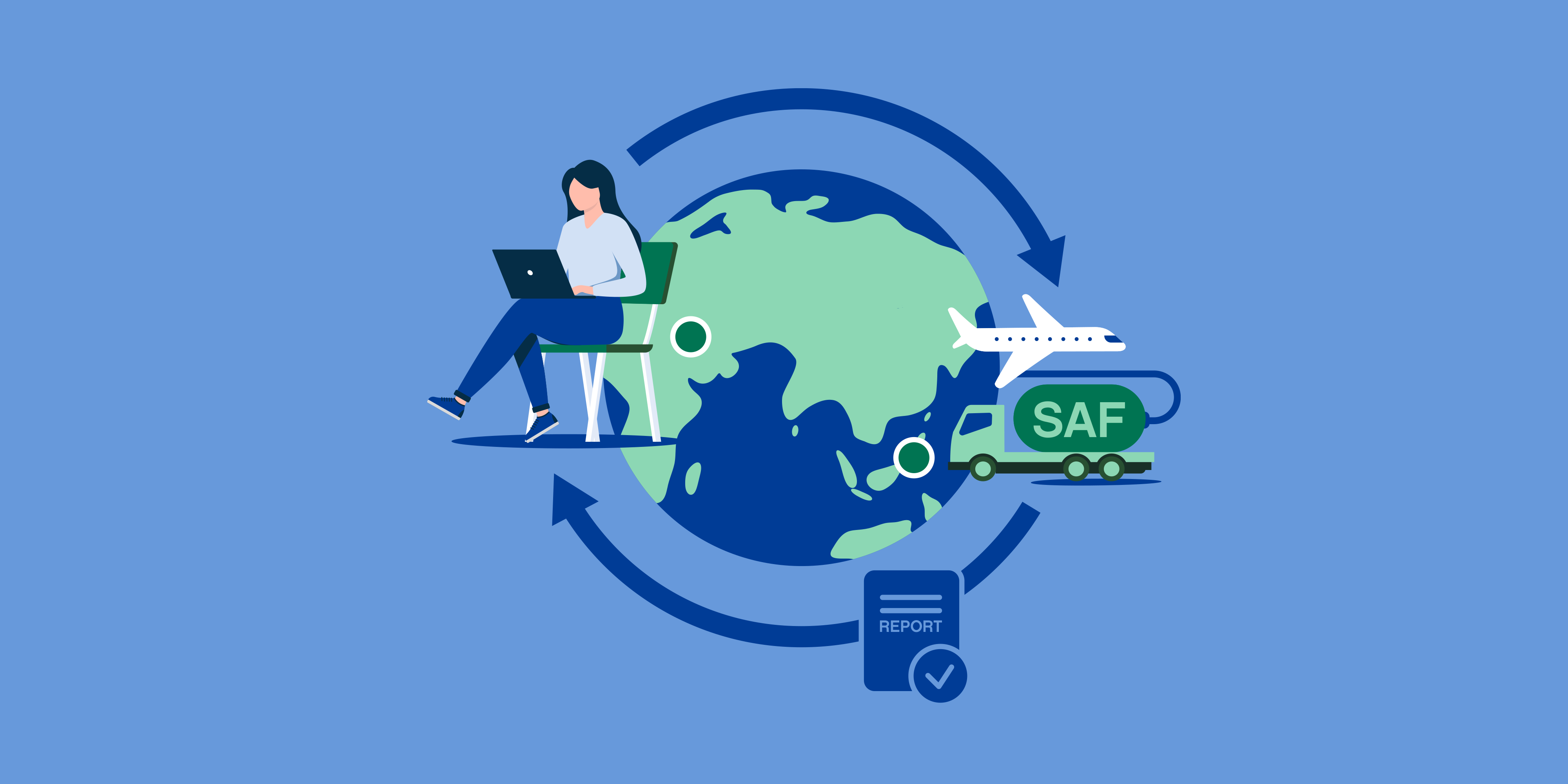
Aviation, News and insights
5 minute read
Reducing climate impact of global logistics: Why action can’t wait
Global freight transport is responsible for a significant share of global greenhouse gas emissions – and the pressure is mounting to act. Renewable fuels, electrification and stronger collaboration across the value chain are critical levers to cut emissions today while building a pathway towards zero-emission global logistics.
Logistics ensures the flow of goods that make modern life possible. Global supply chains depend on seamless transport across air, sea, and land. But this comes at a cost. According to the World Economic Forum, the global transportation industry is responsible for up to a quarter of all greenhouse gas emissions, with freight logistics accounting for about 10 percent.
Logistics is essential for global economies and development, but also responsible for significant emissions. Reducing climate impact of aviation and maritime, in particular, can only be done with renewable fuels because other options – mainly due to the long distances – won’t work at scale.
The logistics industry faces a dilemma: demand is growing, but emissions must shrink drastically. Technologies like hydrogen and electrification hold long-term promise, yet they are not ready to reduce climate impact of aviation, or intercontinental shipping.
Jörg Hübeler, Head of Global Accounts at Neste, underscores the immediacy: “Time is ticking, and we need to mitigate the impacts of climate change with all solutions at hand. Global logistics accounts for about 40% of crude oil demand globally. Starting here is a logical step, and we can make a difference today,” Hübeler says.
Renewable fuels: drop-in solutions with immediate impact
Unlike new propulsion technologies that require large-scale infrastructure and fleet renewal, renewable fuels such as sustainable aviation fuel (SAF) and renewable diesel (HVO100) can be used today without any need for modifications to engines or fuel distribution infrastructure.
“Especially in aviation, shipping, and road freight, you have long-life assets – planes flying for over two decades, trucks driving for at least 15 years. With renewable fuels we can continue using the existing fleet to minimize carbon footprints immediately,” explains Hübeler.
He highlights practical examples that back this up. Deutsche Bahn uses Neste MY Renewable Diesel™ in their old diesel locomotives, achieving immediate emissions reductions as well as smoother performance. Porsche Logistics demonstrated the durability of renewable diesel over 1.6 million kilometers of road freight, with academic verification from the Karlsruhe Institute of Technology. “The results showed no difference in performance, no higher consumption, and even 3% lower fuel consumption compared to fossil diesel,” Hübeler adds.
For aviation, Neste has been delivering its Neste MY Sustainable Aviation Fuel™ globally, from Singapore’s Changi Airport to major aviation hubs in the US and Europe. “Global availability is critical,” says Hübeler. “We recently fueled the first DHL flights with SAF from Singapore. We can provide a solution for global customers across regions.”
Barriers to scaling – and how to overcome them
Despite clear benefits, adoption faces systemic hurdles. Cost remains a central issue: renewable fuels are currently more expensive than fossil fuels. “For a ship operator, renewable fuels may cost 40% more. But for an end consumer buying sneakers in a store, that might translate into just 1–2% more. The challenge is how to shift the perception of cost to where it becomes less decisive for adoption,” Wolff explains.
Technology readiness and supply constraints also play a role. While production is scaling, demand has lagged behind expectations. Policy support, too, has been inconsistent. “The right incentivization and regulatory frameworks are key. Mandates need to provide long-term confidence for investments. Supporting policies are creating the market and the demand certainty,” says Hübeler.
Despite the barriers to scaling, Neste shows that expansion is possible as the company is significantly scaling the production capacity of renewable products at its Rotterdam refinery and scaling globally.
Partnerships as catalysts
Accelerating the shift from fossil fuels to renewable fuels in global freight logistics requires collaboration across the whole value chain: logistics companies, fuel producers, end-customers and policymakers. Hübeler describes these partnerships as twofold:
First, industry relationships build confidence. Second, policymakers need to see that renewable fuels are scalable, so that regulation supports their adoption.
Smart Freight Center sets the standard for emission accounting for scope 3 carbon footprints in logistics across modes end-to-end, and created the Book & Claim specification. “With more than 200 corporate members, Smart Freight Center is the global platform for decarbonizing logistics,” says Wolff. “We bring shippers together, aggregate demand, and build the economic case for solutions like electrified corridors or renewable fuels. Our goal is to create snowball effects that move the industry toward tipping points where adoption accelerates.”
Real-world deployments show that the transition is already happening. For example, Amazon Air is integrating SAF supplied by Neste into its operations in the US. Also, FedEx has launched its first major SAF deployment at Los Angeles International Airport working with Neste as its supplier. These cases highlight the importance of early adopters.
First movers help bring down the cost curve so that others can jump in. They create momentum for change across the industry.
Future of Logistics: an all-solutions approach
The logistics industry sits at the crossroads of global trade and global emissions. With stronger policies, greater collaboration, and first movers leading by example, the industry can deliver the goods the world depends on – without the heavy carbon footprint.
While electrification will play a growing role in road freight, particularly in predictable routes and short-haul operations, renewable fuels are indispensable for aviation and long-haul road transport for decades to come.
“This is not a race between solutions but a joint race to mitigate climate change,” says Hübeler. “Wherever a solution makes sense, we should use it. Road and air provide immediate opportunities, and renewable fuels are ready to help reduce emissions today."




